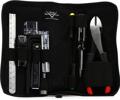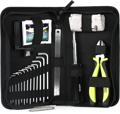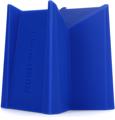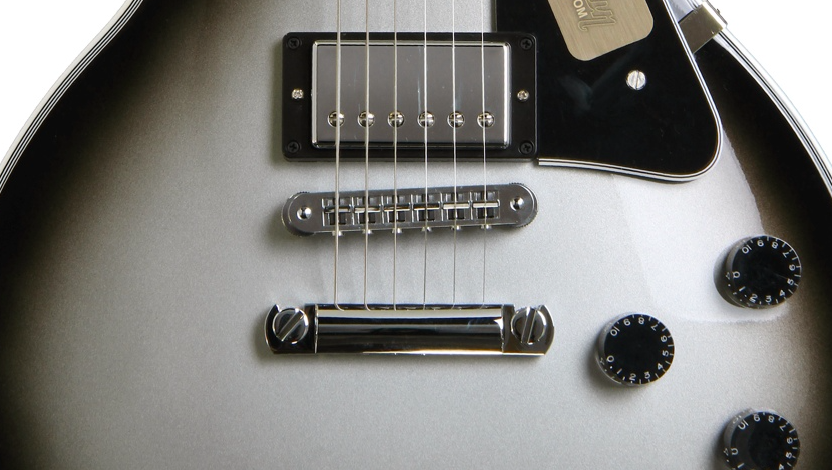
If your guitar’s open strings are in tune but as you fret up the neck the tuning starts to go bad, it’s time to set your guitar’s intonation. A quick way to check this is after tuning, play an open E chord across all six strings. If that sounds in tune, slowly strum a G barre chord at the third fret, being careful to apply even pressure on the strings with your fretting hand so you don’t inadvertently pull one or more of them out of tune by applying uneven pressure. Follow that with a fifth fret A barre chord, a seventh fret B chord and so on to the 12th fret. If you notice the tuning getting farther out as you play up the neck, it’s time to re-set your guitar’s intonation.
Before we start, make sure that your guitar has a fresh set of strings that have been properly installed and stretched, that the action is set properly, the frets and nut are in good shape, the neck is not bowed or warped, and that the tuners and bridge are in good, working order. If all that checks out, lets intonate!
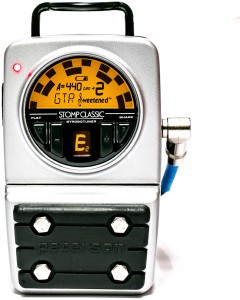
Peterson VSS-C StroboStomp Classic Tuner
Tools you will need:
- A highly accurate tuner, like the Peterson VSS-C StroboStomp Classic Pedal Strobe Tuner with a large display to make it easier to see as you are working.
- A working guitar cable
- The proper tool(s) for moving your bridge saddles closer or further from the nut — this is usually a small flat-head or Phillips screwdriver.
Set up to work in a well-lit area with plenty of room. A bench with a mat, like the MusicNomad Premium Work Mat, to protect the guitar and a headstock prop is ideal, as the guitar will need to lie flat and steady while you work. Laying the guitar across your lap will work in a pinch but can be cumbersome. Plug your guitar into the tuner and perform these steps on each string; note that the bridge hardware may differ a bit on various guitars, but the concepts and process are the same.
1. With a light touch, play a 12th-fret harmonic and make sure it is in tune.
2. With just enough pressure to cleanly sound a note, gently play a fretted note at the 12th fret.
3. Using the tuner, compare the difference in pitch between the two notes; is the fretted note sharp or flat compared to the harmonic?
4. If the fretted note is sharp compared to the harmonic, the bridge saddle will need to be moved back, away from the head stock. If the fretted note is flat compared to the harmonic, the saddle will need to move forward, toward the headstock.
5. Loosen the string at the tuner enough so that the bridge saddle can move freely. Use the screwdriver to turn the bridge adjustment screw so that the saddle moves either forward or back, depending on what your need is. If the saddle has never been adjusted, it may be a bit stubborn and you may have to wiggle it with your finger. An old toothbrush can scrub dust and gunk out if necessary.
6. Place the string back on the saddle, tighten to pitch, and repeat steps one, two, and three. You’ll probably have to repeat four, five, and six as well. Continue in this manner until the fretted note and the harmonic note are both perfectly in tune.
Once you’ve performed these steps for every string and gotten all of them intonated, you’ll be amazed at how much better your guitar actually sounds. Chords will resonate cleanly and your guitar will sound more present, almost louder. Not to mention the fact that the guys in your band won’t look at you funny anymore when you go for that killer lick that starts on the 12th fret!


